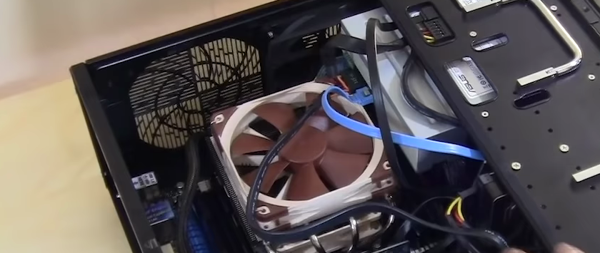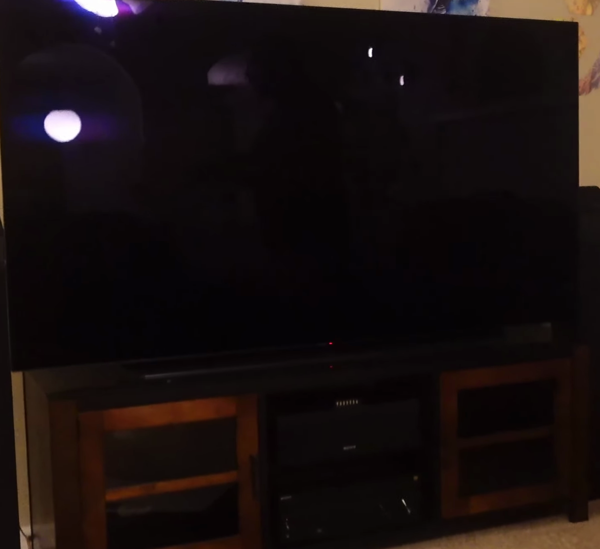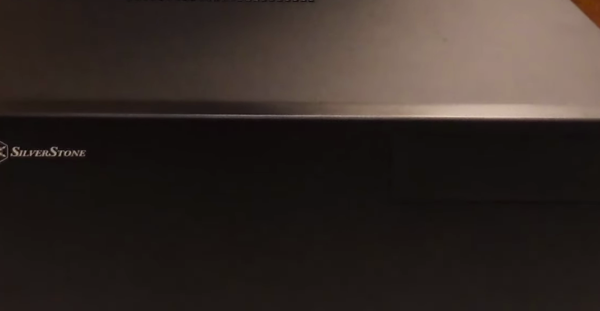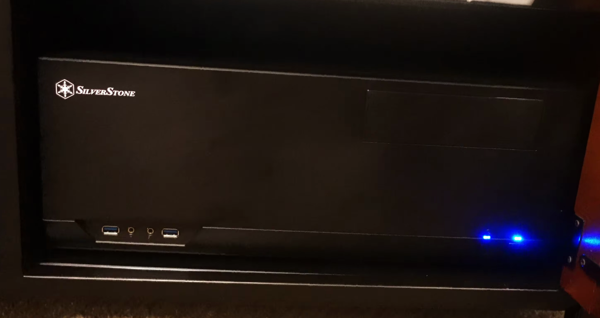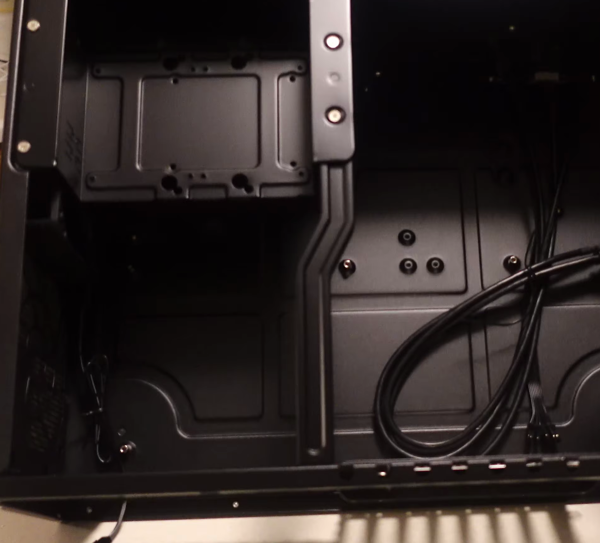Note: As an Amazon Associate I earn from qualifying purchases.
Review: Using the SilverStone GD08B Aluminum Home Theater Computer Case (2024)
Introduction
I’ve used the SilverStone GD08B home theater PC case for some time now - below I discuss its design, build quality, and suitability for a home theater setup in detail. This case caught my interest due to its elegant appearance and the potential to accommodate powerful PC components in a living room-friendly design. While not flawless, my experience with it has been mostly positive.
Specifications
| Property | Value | Property | Value |
|---|---|---|---|
| Brand | SilverStone Technology | Motherboard Compatability | Extended ATX |
| Case Type | Tower | Recommended Uses For Product | Business |
| Color | GD08B | Material | Aluminum |
| Power Supply Mounting Type | Side Mounted (Desktop) | Cooling Method | Fan |
| Model Name | CS-GD08B | Item Weight | 7 Kilograms |
Photos
Click on photos to enlarge them:
Design and Build Quality
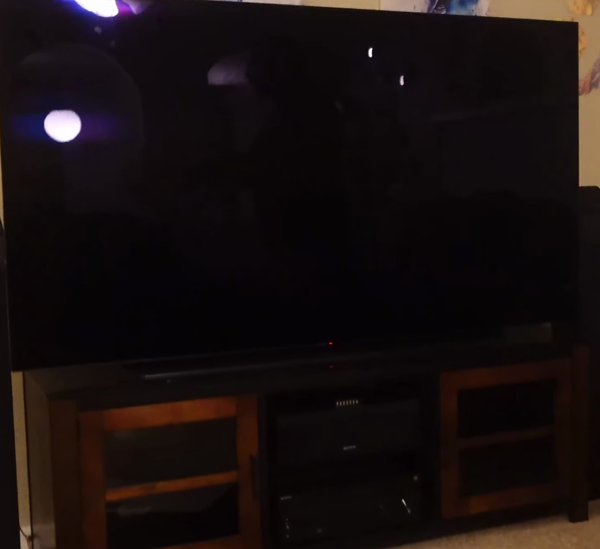
When assessing the design and build quality of the SilverStone GD08B home theater PC case, there are several factors I consider. First and foremost, the case has an aluminum front panel that exudes a premium feel and meshes well with other AV components. The positive pressure design with its quick access filters is a smart touch, emphasizing the focus on maintaining a clean internal environment.
Here are some key points:
High-quality materials used throughout, ensuring durability and stability.
Sleek aesthetics with a brushed aluminum front panel that looks at home among high-end audio-visual equipment.
Lockable front door cleverly hides drives and I/O ports for a minimalist exterior.
However, it’s not without its drawbacks. Cable management can be a bit challenging due to the layout and space constraints. Also, the emphasis on screws over tool-less designs seems a step behind current trends, making maintenance and upgrades more laborious. The LED indicators can be a bit too bright for my taste, but the adjustable brightness feature somewhat mitigates this issue.
On the topic of build quality, the case feels sturdy, and the removable drive cage with handles is incredibly useful for hassle-free drive installation. Despite its compact exterior dimensions, the case feels anything but flimsy—it doesn’t twist or bend even when stripped down. This kind of rigidity is reassuring and speaks to the craftsmanship SilverStone has put into their design.
However, this sturdiness results in a weightier case at 7 kilograms, which might be an issue for those who prefer a more lightweight option. And while the spacious interior is a massive plus, I’ve noticed that the clearance for power connectors, especially on larger GPUs, is quite tight, which might worry some users.
To sum up, the SilverStone GD08B is a well-designed and built case, oozing with a high-end feel while still being practical for the home theater enthusiast. It does show some areas where improvement could be taken, such as easier cable management and perhaps a lighter overall weight, but these are minor in comparison to the significant advantages it offers. The case aligns with what I demand from a living room PC—subtle elegance and robustness—without compromising on the flexibility to house powerful components.
Cooling Efficiency and Dust Prevention

When assessing the cooling efficiency and dust prevention capabilities of the SilverStone GD08B HTPC case, several aspects warrant close examination. These are crucial for anyone looking to maintain high-performance components in a dust-prone environment like the living room. Here’s a breakdown:
Positive air pressure design: In my experience, this is a major advantage as it significantly reduces dust intake. The air pressure from the intake fans exceeds that of the exhaust, pushing out the little dust that manages to get in.
Fan options: The case supports up to four 120mm fans which is outstanding for an HTPC case. This variety means more options for managing airflow based on my component choices and cooling needs.
Custom designed removable filters: These filters are a lifesaver. I’ve found that they trap a substantial amount of dust, which makes them one of my favorite features as they keep the internals clean with minimal effort.
However, this case is not without its minor drawbacks:
Fan quality: The stock fans are somewhat basic. I’ve found it necessary to upgrade to higher-quality fans for better performance and quieter operation.
Limited fan control for 3-pin fans: With 3-pin fans included, I can’t control speeds from the motherboard, possibly leading to a louder setup at full spin.
Maintaining the cooling efficiency over time is a straightforward process with the GD08B due to its design emphasizing low maintenance. The removable filters are notably easy to clean—a pleasant surprise given the hassle I’ve experienced with other cases.
My personal findings on the cooling efficiency side are overwhelmingly positive. The heat dissipation is more than adequate for a media-heavy setup. I’ve run high-definition streams and engaged in gaming sessions, all while the case manages to keep temperatures in check. The spacious interior does facilitate good airflow, ensuring that even during intense operations, my components don’t throttle due to heat.
On the dust prevention front, the filtered intakes work in tandem with the positive pressure design to minimize dust entry effectively. Living with pets, I often find electronic equipment becoming quickly clogged, but the GD08B has kept my internal components relatively pristine. The filters do their job well, though the monthly clean-out I commit to has become a ritual to ensure optimal performance.
For anyone balancing the needs of high-performance HTPC components with the aesthetic and functional requirements of a home theater environment, the SilverStone GD08B stands out as a solid choice, provided you’re willing to invest in some fan upgrades for the ultimate quiet and cool experience.
Internal Space and Component Fit

In my experience with the SilverStone GD08B case, one of the standout features is its internal space and how it accommodates various components.
Pros:
Generous internal dimensions allow for a range of motherboard sizes, including Extended ATX.
Up to twelve drive bays offer extensive storage options, which is more than most HTPC cases on the market.
A removable drive cage with handles greatly assists with the installation and swapping of drives.
Cons:
The sheer amount of possible drives might lead to a tight fit, especially if using larger graphics cards.
Installation can be tricky due to the compact layout; it’s not a snap-together affair and requires some time and patience.
Cable management can present a challenge, as there are limited hooks and spaces to tuck away excess cables.
The ability to house an Extended ATX motherboard within the confines of an HTPC case is quite impressive. This usually means a trade-off with external dimensions, but SilverStone has effectively maintained compatibility without unnecessary bulk. The capacity to have up to eleven drives, including both 3.5” and 2.5” sizes, positions this case as a workhorse for data-heavy users. Storing an entire media library alongside your gaming collection on one device is easily attainable, making the GD08B a versatile unit fitting both server and entertainment center roles.
Upon building my system, I found the removable drive cage notably helpful—a lifeline for dealing with multiple drives. It’s a thoughtful inclusion that speaks to the challenges of manipulating components within a smaller form factor. However, this feature is something of a double-edged sword, as I’ve had to disconnect everything to make one change or upgrade to my setup.
I must admit, the tight internal spacing can test your patience. It takes strategic placement of components and cables to avoid a cramped setup, which can impact airflow. Moreover, SilverStone’s decision to stick with traditional screw mounts over the popular tool-less designs added some time to the build process.
One of the drawbacks I faced was the pressure applied on the power connectors for larger graphics cards, which seems to be a design oversight. Additionally, the power supply clearance restricted my options and affected the budgeting for the build.
Despite these minor setbacks, it’s apparent that the SilverStone GD08B has been designed with heavy-duty use in mind, and the flexibility in component fit justifies its positioning as a premium HTPC case. The internal space accommodates an ambitious build, yet it’s wise to plan your configuration thoroughly to ensure a clean and efficient setup.
Practicality for Home Theater PCs

In terms of practicality, the SilverStone GD08B case stands out as a robust solution for anyone looking to build a home theater PC that doesn’t compromise on power or storage potential. I’ve spent considerable time assembling systems in this case, and I can confidently say that it offers a unique blend of aesthetics and functionality, a critical consideration for HTPC builders who need their systems to fit seamlessly into living room entertainment setups.
Here are the main practical advantages I’ve identified:
Space efficiency: A tight home theater setup demands a case that maximizes internal space without ballooning its external dimensions. The GD08B’s ability to house up to eleven drives and accommodate Extended ATX motherboards is impressive, especially considering its relatively compact footprint alongside other AV components.
Cooling: The positive pressure design, coupled with the option for four 120mm fans, means the cooling of this case is both effective and quiet, which is exactly what you want in a home theater environment.
Ease of use: Quick access filters and a rack-mountable design might not sound like headline features, but when it comes to regular maintenance or integrating into various setups, they’re incredibly useful.
Security: The lockable front door not only hides less attractive components but also adds that extra peace of mind knowing your system’s components are secured.
However, it’s only fair to mention a few drawbacks. The sheer number of screws needed for assembly can be daunting and is somewhat at odds with the modern trend towards tool-less design. And while the cooling is generally efficient, the case fans included are not the best quality – you might find yourself budgeting for aftermarket replacements.
Cable management poses a challenge, too. With limited routing space and few anchor points for zip ties, setting up a clean build requires a bit of creativity. Another consideration is the choice of your PSU – the case has certain size restrictions that can influence your build’s cost and configuration.
Lastly, it’s worth noting that while the case is built for a full-size component fit, you should be wary of GPU height and the additional space needed for power connectors as this can be a tight fit.
In conclusion, the SilverStone GD08B has proven to be a reliable cornerstone for my home theater and server builds. It’s a case that ensures I don’t have to sacrifice full-size hardware capabilities for the sake of fitting into my living room aesthetic. The benefits certainly outweigh the inconveniences, making this case a solid choice for any HTPC builder seeking a harmonious balance between performance and practicality in a home theater setup.
